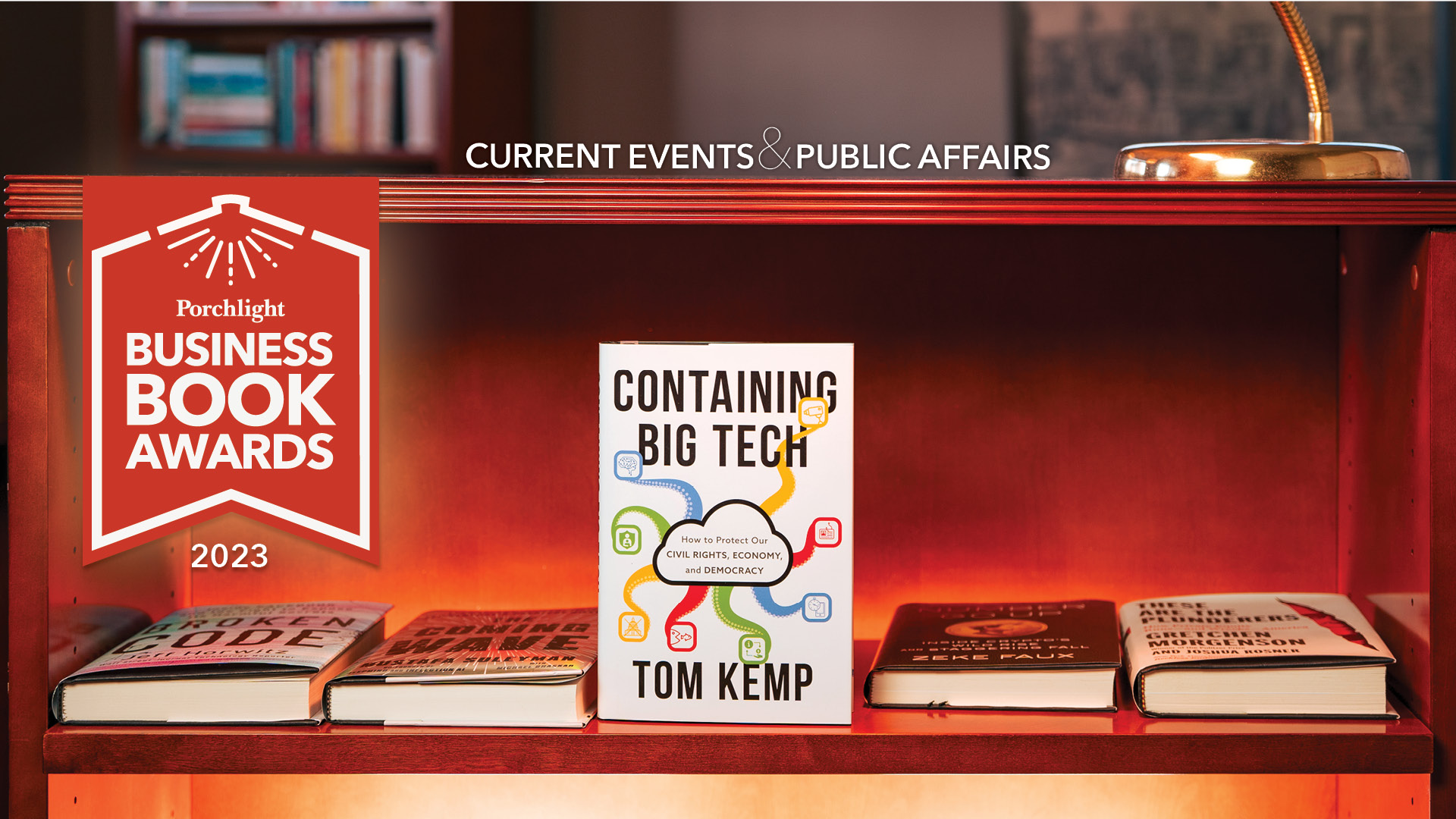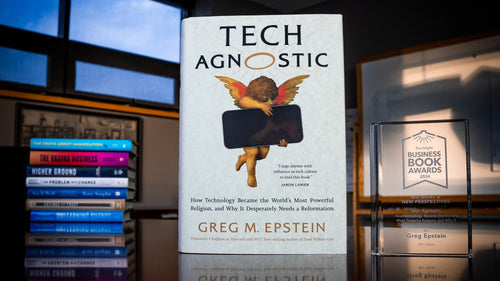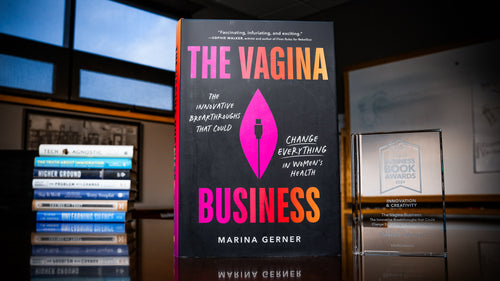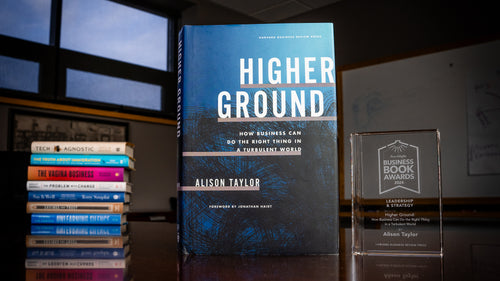Containing Big Tech | An Excerpt from the Current Events & Public Affairs Category

On May 10, 1869, at Promontory Summit in the Utah Territory, railroad tycoon Leland Stanford drove a golden spike that connected the Central Pacific Railroad rails to the Union Pacific Railroad rails. Thus, the First Transcontinental Railroad across the United States was created. A technological breakthrough, the railroad enabled travel from the East Coast to California to be cut from many months—via lengthy and dangerous sea voyages or wagon trains—to less than a week by more comfortable trains.1
The achievement also made Stanford and the rest of the “Big Four” owners of the Central Pacific incredibly wealthy and created one of the first monopolies in the United States. Their investment of $15,800 eventually led to profits of over $200 million in their lifetimes, which equates to $6.5 billion in 2023 dollars. The Big Four’s dominance over freight in California, accumulation of massive profits, association with the 1880 shoot-out in Central California over a land dispute between farmers and the railroad that left seven people dead, and political control over the state led them to be called “robber barons.” Unsurprisingly, the Big Four and their railroad were depicted on a magazine cover in 1882 as a giant octopus devouring labor and other industries that relied on its rails, with the tagline “The Curse of California.”2
Since then, the United States has had other large, powerful conglomerates and monopolies. In the late 1800s and early 1900s, John D. Rockefeller’s Standard Oil monopoly was also caricatured as an octopus. American Telephone & Telegraph (AT&T) dominated the telecommunications industry for over one hundred years until its breakup in 1983. The “Big 3” in automobiles—General Motors (GM), Ford, and Chrysler—had 80 percent of the world’s automobile production up until 1950.3
Today we have the five large “Big Tech” firms—Amazon, Apple, Google (a subsidiary of Alphabet), Meta (formerly Facebook), and Microsoft. Some are monopolies in specific large markets—for example, Google in search. And they are also duopolists and oligopolists that compete against each other in other large markets—for example, Apple and Google share the market for mobile operating systems and app stores.4
Big Tech has become the standard bearer for Silicon Valley innovation. For example, coming out of the dot-com bust, Google heralded the return of Silicon Valley with its IPO in 2004, and amazingly Google could give us the modern equivalent of the Library of Alexandria with just a click of the mouse. Likewise, Apple’s launch of the iPhone in 2007 showed that Silicon Valley could out-innovate the world and create the next generation of smart devices, giving us a powerful computer in the palm of our hand. And Meta’s IPO in 2012 shone the light back on Silicon Valley after the 2008 recession with social media as a global phenomenon that could connect us all.
Big Tech has also become the standard bearer for the American economy. This is represented by the fact that in 2022, these companies alone represented nearly one-fifth of the Standard & Poor’s 500 Index, which tracks the stock performance of the five hundred largest companies in the US. In comparison, the entire oil and energy sector represented less than 5 percent, while all the financial services firms combined represented slightly over 10 percent. Moreover, if one were to map Apple’s market capitalization of over $2 trillion in 2022 to gross domestic product (GDP), it would mean that Apple would be tied for eighth in the rankings of the world’s largest economies by GDP.5
Companies like GM had a comparably large market capitalization in their heyday. For example, in 1955, with America experiencing a post–World War II economic boom, GM represented about 3 percent of the total market value of the S&P 500 Index, which implied a market capitalization of approximately $1 trillion in 2022. But, in contrast, four of the five Big Tech companies had a market capitalization of over $1 trillion in 2022, while GM in 1955 was the only company with that equivalent market capitalization.6
Even with that in mind, some may still say that these Big Tech firms that have emerged as the leaders in this Third Industrial Revolution—today’s digital and computer age—are just the modern-day equivalents of Standard Oil and GM. Those conglomerates came from the Second Industrial Revolution, marked by mass production powered by electricity, which replaced the First Industrial Revolution, characterized by the use of steam power to mechanize production.7
Big Tech’s broader and deeper reach
But Big Tech is not equivalent to past monopolies in prior industrial revolutions. Instead, Big Tech is more powerful and impactful than past giants, given its significantly broader and deeper reach with consumers across the globe that is unmatched in history. For example, as of 2022, Google had 4.3 billion users of its products, Meta had over 2.9 billion, and Microsoft and Apple had over one billion. And China-based TikTok, likely to be the newest member of the Big Tech club, has over one billion users as of 2022—and reached that number in just five years, three years before Meta hit that mark. Moreover, the world’s population in 2022 was eight billion, so each Big Tech firm is directly interfacing with between 13 percent and 54 percent of the world’s population. In contrast, it took GM over one hundred years to sell five hundred million cars.8
We use Big Tech’s products daily to create, locate, shop, learn, entertain, work, and communicate with others. And, unlike with earlier titans, it is not just one product from each Big Tech firm that we use and rely on. For example, as of 2022, Meta’s Facebook service has over two billion users, Meta’s Instagram and Messenger services have 1.3 billion users each, and Meta’s WhatsApp has two billion users. In comparison, Google claims it has at least nine services with over one billion users, including 3.2 billion users of the Chrome browser, 2.2 billion users of YouTube, and over 1.8 billion users of Gmail.9
Most of our modern daily life relies heavily on Big Tech’s products that offer significant value to us. In other words, their products are not nice-to-haves but must-haves. For example, a tech reporter with the New York Times tried for six weeks not to use any of their products and found it “impossible.” The issues included finding a computer that did not run Microsoft Windows or Apple Mac OS X or a phone that did not run Google’s Android or Apple iOS. And she could not even use popular apps like Netflix or Uber because they either run on Big Tech’s cloud platforms (e.g., Amazon Web Services or Microsoft Azure) or use their mapping technology (e.g., Google Maps).10
Furthermore, these interactions happen every day. Big Tech embeds itself in our daily lives and consumes our attention. For example, global internet users—numbering 4.96 billion in 2021—spend 2.5 hours daily on social media. And in some developing countries, Meta provides free internet access to its website and others, so Meta is the internet for millions of people. For each minute in 2021, there were 5.7 million Google searches, 240,000 shares of photos on Meta’s Facebook, and twelve million Apple iMessages sent. And as of 2021, 70 percent of American adults use Meta’s Facebook, and 80 percent use Google’s YouTube.11
The threats associated with Big Tech
Not only is Big Tech’s reach dramatically broader and deeper than past industry giants, and we are more reliant on their products, but Big Tech collectively represents a more significant threat to our society. The hazards include the digital surveillance business model many Big Tech firms utilize, which weakens our privacy and makes us more susceptible to identity theft. The threats also encompass Big Tech’s massive investments in artificial intelligence (AI) to develop technologies that can be addictive and exploitative. And finally, the threats also involve all these firms’ monopolistic power over key digital markets in our economy, resulting in suppressed competition and innovation. None of these are healthy for our society, but the threat is even more severe when two or three are combined.
Let me briefly drill down on each of these threats.
First, the mass collection and monetization of our data by companies like Google and Meta mean they know more about our behavior—our precise location, internet searches, purchases, and apps—than our friends and family. So, yes, Standard Oil was mighty. But it did not know everything about us. And we must accept the terms of use of Big Tech’s products that do this intrusive data collection because their products are essential to navigating our modern life, and we have no reasonable alternatives.12
Historically this near-total digital surveillance has enabled those companies to profile us and utilize this deep insight to let advertisers target us. But now, this data and behavioral analysis can be weaponized against us if, for example, you facilitate or get an abortion in certain US states. Or it can be used by adversarial nation-states to attack our democracy. Furthermore, the massive amounts of data collected by these Big Tech firms and the digital advertising ecosystem they facilitate can expose millions of people to identity theft every year.
Second, Big Tech is also at the forefront of developing AI technology that simulates human intelligence by identifying patterns in data and automating decision-making. Some Big Tech firms leverage AI to build products imbued with persuasive technologies designed to suck up more and more of our attention and keep us on their platforms. This can, for example, result in us seeing more ads and, in turn, generating more revenue for them. Unfortunately, these AI systems can also increase user engagement that, if left unchecked, is addictive and can increase polarization by limiting contrary viewpoints, thereby keeping us firmly in our respective information bubbles. Or, even worse, it can push us into rabbit holes of conspiracy theories, disinformation, and extremism. Neither AT&T nor the Big 3 was addictive, nor did they weaken our democracy.
We also see that some Big Tech firms have not fully designed their user interfaces and AI-based back-end systems with children in mind. The result is that these Big Tech firms are lax in protecting children from the risks of the digital world by exposing them to addictive technologies, harmful or inappropriate content, unsolicited contact with adults, and cyberbullying. This leads to serious questions about Big Tech and its impact on children’s development and mental health.
And third, all Big Tech firms have been aggressively acquiring or stifling competitors. In addition, consumers’ reliance on Big Tech creates a technology toll road for its competitors, as other products must often interface with Big Tech’s platforms or be sold in their app stores or marketplaces. Critics then say that Big Tech “preferences” its products in its app stores and marketplaces by treating its products more favorably in recommendations and search rankings than third-party offerings, thus limiting consumer choices and competition.
Big Tech continues to gain a competitive advantage as they get more widely used. Known as “network effects,” this means as they gain more users, their platforms become more compelling and valuable—“ sticky.” In the case of Meta, that means consumers can keep tabs on more friends, or in the case of Google’s search capabilities, it means better insight into who is clicking on what links that will drive a better ranking of search results. But network effects can be leveraged for anticompetitive behavior. For example, Big Tech has been accused of purposely not making its products interoperable with alternative solutions. This locks in consumers because if they move off of Big Tech’s products, they lose the ability to communicate and socialize with friends who are still on those platforms. And critics say that Big Tech firms unfairly use their knowledge of which third-party solutions are trending with consumers in their marketplace or app stores and then will turn around and offer their knock-off versions.
So, when you combine these anticompetitive practices, one can say that Big Tech has, in effect, taken PayPal co-founder Peter Thiel’s widely followed advice in Silicon Valley that “competition is for losers.” In Thiel’s estimation, this means that the best end state for a technology company to strive for is becoming a monopoly. That’s good for the company, its investors, and its employees. But it is not healthy for society and our economy in the long run, as it concentrates power and inhibits innovation and job creation.13
Excerpted from Containing Big Tech: How to Protect Our Civil Rights, Economy, and Democracy with permission of Fast Company Press. Copyright © 2023 Thomas R. Kemp. All rights reserved.
Notes:
1. Kevin Starr, California: A History (New York: Modern Library, 2007), 81; Wikipedia, “Central Pacific Railroad,” updated January 24, 2023.
2. Starr, California: A History, 117, 154–155; CPI Inflation Calculator, accessed January 10, 2023, with the start year of 1890 and the end year of 2023.
3. The Geography of Transport Systems, “Automobile Production, Selected Countries, 1950–2021,” accessed January 3, 2023.
4. In light of the fact that Google is 99 percent of Alphabet’s revenue, I will refer to Alphabet as Google. Alphabet is a holding company that was created through the restructuring of Google in 2015, with Google becoming a subsidiary of Alphabet. In light of Meta Platforms Inc. doing business as Meta, I will refer to the company as Meta. Meta was formerly named Facebook, with the renaming occurring in Unless otherwise indicated, Facebook will refer to Meta’s flagship social media networking service, which Meta offers alongside other products and services such as Instagram, WhatsApp, and Messenger.
5. Slickcharts, “S&P 500 Companies by Weight,” accessed December 31, 2022; World Population Review, “GDP Ranked by Country, 2022,” accessed December 31, 2022.
6. Al Root, “Tesla Isn’t the Most Valuable American Car Company Yet,” Barrons, January 9, 2020.
7. Klaus Schwab, “The Fourth Industrial Revolution: What It Means, How to Respond,” World Economic Forum, January 14, 2016.
8. Shelley Walsh, “50 Google Search Statistics & Facts,” Semrush Blog, May 25, 2021; World Population Review, “Facebook Users by Country, 2022,” accessed January 3, 2023; Anyron Copeman, “Windows Now Has 1.4 Billion Users, but How Many Are on Windows 11?” Tech Advisor, January 26, 2022; William Gallagher, “There Are 1B iPhones in Use Worldwide, Apple Says,” Apple Insider, January 27, 2021; Wallaroo, “TikTok Statistics—Updated January 20, 2022,” updated January 20, 2022; Katharina Buchholz, “The Road to One Billion Users,” Statista, October 14, 2021; Jay Traughott, “Guess How Many Cars GM Has Built in Its 106-Year History,” CarBuzz, May 5, 2015.
9. Statista, “Number of Instagram Users Worldwide from 2020 to 2025,” accessed January 3, 2023; Daniel Threlfall, “27 Facebook Messenger Statistics That Will Change the Way You Think About Marketing,” MobileMonkey, updated May 2021; ThinkImpact, “WhatsApp Statistics,” accessed January 3, 2023; Shawn Knight, “Google Photos Passes the One Billion User Mark, Ninth Product in Google’s Roster to Do So,” TechSpot, July 24, 2019; Statista, “User Population of Selected Internet Browsers Worldwide from 2014 to 2021 (in Millions),” accessed January 3, 2023; Statista, “YouTube – Statistics & Facts,” accessed January 10, 2023; SaaS Scout, “Gmail Statistics, Users, Growth and Facts for 2021,” accessed January 3, 2023.
10. Kashmir Hill, “I Tried to Live Without the Tech Giants. It Was Impossible,” New York Times, July 30, 2020.
11. Simon Kemp, “Digital 2022: Global Overview Report,” DataReportal, January 26, 2022; Justin Scheck et al., “Facebook Promised Poor Countries Free Internet. People Got Charged Anyway,” Wall Street Journal, January 24, 2022; Domo, “Data Never Sleeps 9.0,” accessed January 3, 2023; John Gramlich, “10 Facts About Americans and Facebook,” Pew Research Center, June 1, 2021.
12. Federal Trade Commission, “Commercial Surveillance and Data Security Rulemaking,” August 11, 2022; Standard Oil analogy quoted from Alastair Mactaggart in “Californians for Consumer Privacy’s Proposition 24 Webinar,” October 1, 2020.
13. Peter Thiel, “Competition Is for Losers with Peter Thiel,” Y Combinator, YouTube video, 50:27, March 22, 2017.



